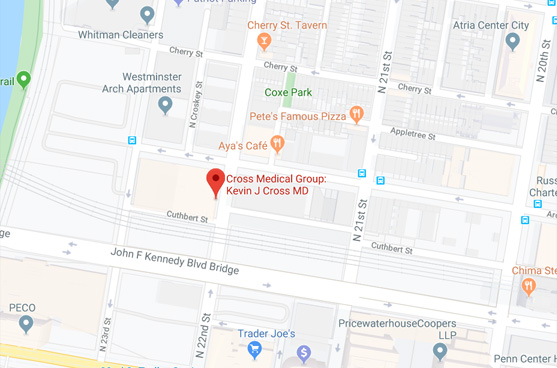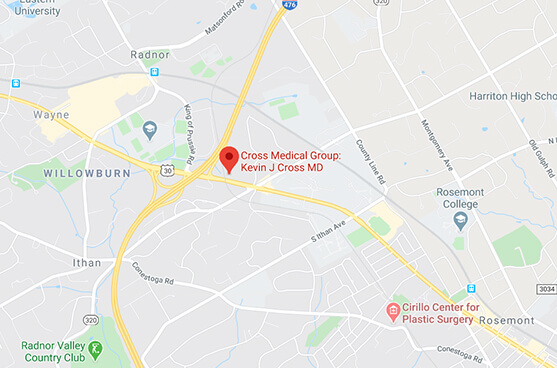Philly.com-Baby boomers put their necks on the line
By Gloria Hochman and FOR THE INQUIRER
Posted: July 10, 2012
In her best-selling book I Feel Bad About My Neck, the late author Nora Ephron wrote, “I can’t stand people who say that ‘it’s great to be old, great to be at the point where you understand what really matters in life.’ What can they be thinking? Don’t they have necks?”
Walter Dowgiallo, 64, has never read Ephron’s book, but he became bothered with “this little thing under my chin. I didn’t like it and felt I really needed to look good because of the business I’m in.”
Dowgiallo, the father of four adult children, owns a company that creates the aesthetic labels and packaging for Victoria’s Secret, Liz Claiborne, and Bath & Body Works products, among others. “I felt I needed more pizzazz, that I had to look as good as the product I made,” he says, “and nature is not always as nice to you as it is to some people.”
Since plastic surgeon Joel J. Feldman “lifted” his neck six years ago, Dowgiallo says he feels “spectacular. If you look good, you feel great. Every day I get up, look in the mirror and say ‘Wow!’?”
It used to be that cosmetic surgeons would not treat the neck alone. Men and women who coveted a tight neck and enviable profile had to endure a full face-lift. But 20 years ago, Feldman, who practices in Cambridge, Mass., published the results of his work on a “corset platysmaplasty,” a procedure that, through a small incision tucked under the chin, could tighten the muscles of the neck and reshape the jaw line.
Today, a growing number of surgeons are using that procedure or a variation of it to address the neck only. New York surgeon Alan Matarasso says that half of the lifts he does each year are solely neck lifts.
This is good news, says Kevin J. Cross, a plastic surgeon who practices in Philadelphia and on the Main Line, for people who have been unhappy with their necks for years but were reluctant to have a full face-lift. He describes a typical patient, Elaine, who lives in Bala Cynwyd and didn’t want her last name used because of the stigma some people associate with cosmetic surgery. Elaine came to him inquiring about Ulthera, a nonsurgical skin-tightening treatment. But Cross was candid. “Ulthera isn’t for everyone,” he told her. “You won’t be happy with the results.” Cross advised her to consider surgery. “If you were my relative, that’s what I’d tell you,” he said.
Elaine was ready to walk away. “I didn’t want to look like a ‘Boca babe,’ someone who obviously had a lift,” she said in an interview. But her husband encouraged her. “Go for it,” he urged.
A month later, early on a Monday morning, Elaine had neck and eyelid surgery, a four-hour procedure. On Saturday of that week, she invited eight women friends to what she calls a “staring” party, a festive dinner to which “I wore a big, black velvet caftan and sunglasses because my eyes were still red and swollen. Everyone was stunned. They couldn’t believe the way I looked. My 14-year-old granddaughter said, ‘I have a teenage grandma.’?”
Cross says that 90 percent of those who come to his office for a consultation point to their necks as the area that bothers them the most. “It is the hardest part of the face to camouflage with makeup or to respond to diet, exercise, or sun avoidance,” Cross says, “and there is no good season for a bad neck. In the winter, it is the bulge that is accentuated even over a woman’s turtleneck sweater or a man’s shirt collar. In summer, on the beach, there is no hiding.”
Matarasso, spokesman for the American Society of Plastic Surgeons, says, “Neck skin is physiologically different from facial skin. It has less of a certain cell type that results in more rapid aging. When patients come in 15 years after a face-lift and want something done, it is usually their necks.”
In today’s competitive workplace environment where 60-year-old men vie with those half their age, it is not surprising that rapidly escalating numbers of men, like Dowgiallo, want the younger, more streamlined look that comes with a chiseled neckline. Of the 90 or so neck lifts that Feldman does annually, almost half his patients are male.
While many women and some men are still undergoing traditional face-lifts to address the sags and droops that are beyond the reach of Botox and facial fillers, growing numbers are opting for the firmer neck and sculpted jaw line that some surgeons say can be achieved with less extensive surgery. But the American Society of Aesthetic Plastic Surgeons has no statistics on the prevalence of the procedure. “We have been tracking the same surgeries for 15 years,” says Adeena Babbitt, the organization’s director of public relations, “and we haven’t created a category for just neck lifts.”
“I just want my neck done” is a naive request, according to Louis P. Bucky, a plastic surgeon who has practiced in the Philadelphia area for 16 years. “Anatomically, the muscles of the neck are connected to muscles of the face,” he says. ” If you try to tighten just the neck muscles, you will not do the face a service.”
Bucky, the chief of plastic surgery at Pennsylvania Hospital, says face-lifts are more effective even for patients whose main complaint is about their necks. He says he was lucky to have entered the field when a quick recovery from a face-lift became possible. His face-lifts take two hours, he uses no drains, and “I tell my patients that after 10 days of rest and healing, they can go to their third-favorite restaurant and look perfectly presentable. In three weeks, they’ll look great.”
“Frequently, a person would benefit most from a face-lift but doesn’t like to use that word, says R. Barrett Noone, a longtime Bryn Mawr plastic surgeon. “If I suggest that it would be best to do a little more in the jaw line with an incision in front of the ear, they’ll be fine with that. Just don’t call it a face-lift.”
“Whether you call it a neck lift, a mini lift, or just a face-lift is only semantic,” says Oren Friedman, director of facial plastic surgery and associate professor in the department of otorhinolaryngology at the University of Pennsylvania School of Medicine. “Take away the terminology and ask the patient to just use descriptive words to describe what bothers her or him. Then, together, you can determine the procedure that will give the biggest bang for the buck.”
One size doesn’t fit all, and “the secret is in the skin’s elasticity,” says Daniel Baker, a renowned cosmetic surgeon who has practiced in New York for more than 40 years and performed his artistry on the faces of countless celebrities. “In patients with good skin elasticity, you can do liposuction and the skin will spring back over the muscle,” he says. In other cases, “I will make a tiny incision under the chin through which I tighten muscles, remove fat and get a nice, sculpted neck and no scars.”
“No matter what patients say they want, it is the surgeon’s responsibility, after evaluating him or her, to provide education about whether “we can marry our skills to their wishes,” says Leo R. McCafferty, president of the American Society for Aesthetic Plastic Surgery. If we can’t, the best advice we can give is not to have surgery.”
Surgeons willing to do the neck only say there are advantages to the procedure. There are less swelling in the face, minimal, barely noticeable, incisions, and the promise of turning the clock back 10 to 15 years depending on the patient’s age. The lift of a 50-year-old will probably last longer than that of a 75-year-old. But it’s never too late. Elaine was nearly 70 when she had her surgery.
Smaller incisions and less extensive surgery, however, do not eliminate risks. Complications are rare, but can include injury to nerves, infection, and hematoma, a blood collection under the skin that needs to be drained.
Recovery time may be quicker after a neck lift; most people can go public in 10 days to two weeks.
“Most of my patients don’t get much bruising,” Baker says, “and they feel OK about going out in a few days. In New York, people don’t pay much attention. They see George Clooney walking down the street and don’t even turn their heads.”
Peggie Broderick, an empathetic but no-nonsense redhead known for her gentle touch and reassuring style, has tended to thousands of patients postoperatively in her more than 40 years as a plastic-surgery nurse. “Most patients, even the ones who were nervous and apprehensive going into surgery, find recovery easier than they expect,” Broderick says. “I don’t hear many complaints at all, not about pain, not about tightness, not about anything.” Broderick, who came to this country from Ireland in 1971 and still has an Irish lilt in her voice, was head nurse at Manhattan Eye, Ear and Throat Hospital, New York’s busiest facility for cosmetic work, for more than 27 years before joining Baker’s practice in 1998. She now works for Matarasso.
Even though aesthetics consultant Wendy Lewis calls herself the “knife coach,” she suggests that there are effective nonsurgical alternatives for those who won’t have surgery no matter what. She reminds, however, that the fixes — laser treatments that may tighten the skin, evolastin and Thermage, which work on radio-frequency energy and may firm skin and restore volume — are temporary.
“Lasers and other devices are wonderfully effective for fine lines, wrinkles, and skin pigmentation,” agrees Eric Bernstein, a dermatologic laser surgeon who heads the Main Line Center for Laser and Cosmetic Surgery in Ardmore. But he is convinced that “there is no technique, no laser that can replace surgery when a patient is troubled by loose skin and a ‘turkey neck.’?” He refers those patients to Jason Bloom, a plastic surgeon in his practice. “If you could do dramatic tightening without surgery, who wouldn’t do it?” he asks. “But surgical results without surgery aren’t available today. We need to be honest.”
Meanwhile, Elaine is in love with her new look. She is about to celebrate her 50th wedding anniversary and is thrilled when her husband tells her she looks the way she did 20 years ago. She smiles when her friends peer closely for her scars and can’t find any. But her most magical moment came when a cashier wouldn’t sell her a bus ticket without seeing her age identification card. “Can you imagine?” Elaine asks. “She couldn’t believe I’m a senior citizen.”




